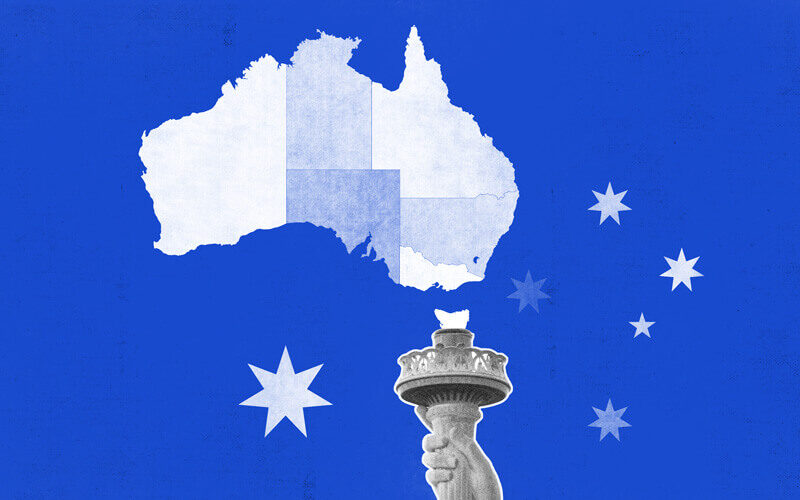Every major economic downturn in the last century has produced breakout startup successes.
They have also triggered many spectacular market crash-outs.
What’s the difference here? Why do some startups thrive in adversity when others get taken out at the knees? What separates the wheat from the chaff when the field is on fire?
Our current economic situation is certainly one for the history books. COVID-19 was a business blessing to some (hello ecommerce industry) and a devastating blow to most (anything customer facing).
Q3 2022 is seeing mass layoffs, VC deals plummeting across the board, the S&P 500 facing its sharpest decline since 2001, and the stock market has entered bear territory. As recession rears its ugly head, early-stage companies are entering fight or flight mode.
But if history tells us anything, it’s that lucrative opportunities can be found in the most unlikely of places. From the Great Depression to the dot-com crash, recessions have given rise to some of the most successful businesses and biggest fortunes in the world.
The Great Depression
The effect was if the 1929 stock market crash was clear and devastating, and a mass shutdown of businesses caused an unemployment rating of 32% in Australia. When fate decided to tack on the 1937 Recession, it was a decade before things began to look up again.
Some came out swinging.
While Disney was founded a few years before the Depression, it’s interesting to look back and note that Walt’s most memorable creations – Mickey Mouse, Snow White and the Seven Dwarfs, Fantasia – were all released amid economic turmoil.
Call it perfect timing or the power of escapism, people flocked to the cinema in droves, and Disney’s box office revenue grew to USD $180 million by 1937.
As much as we’d like to believe it was the magic of Disney, it all came down to good old-fashioned business acumen. Faced with dwindling resources and a devastated workforce, Disney set about sourcing his additional stream of revenue: merchandising.
Disney licensed his characters’ likenesses to anyone willing to pay. General Foods paid a million dollars to use Mickey Mouse on cereal boxes. The strategy earned Disney $100 million in licensing every year.
Disney wasn’t the only unicorn to fly in the face of the Depression.
William Clarke and Marie Williams ran a phone board out of their home. In 1930, they bought Oak Ridge Telephone Company for $500. They continued to acquire failing competitors throughout the recession until they became CenturyLink and later Lumen Technologies, now a $10 billion market cap behemoth.
Procter & Gamble kept brand awareness up throughout the purse-string tightening days by creating the soap opera. They produced long-running radio shows and sponsored daytime TV to make sure their soaps were front of mind when housewives could afford to buy them again.
Elizabeth Arden also used the young medium of radio to keep customers engaged throughout the Depression years.
The takeaways here are not to turn to cartoon illustration or attempt to revive radio advertising, but to look for opportunities in unlikely places. Surviving adversity calls for both adding and subtracting – slashing outgoings while adding creative revenue streams.
It’s also about looking at how people are communicating and where they’re gathering, and connecting with them, nurturing relationships, and fostering solidarity there while you wait out the turmoil.
The Dot Com Bubble Burst
It was the year 2000 – kids were collecting yo-yos, tamagotchis and Beanie Babies, blissfully unaware of the outwards-spinning worldwide web that was about to consume their lives. The world managed to underestimate the impact of the internet while severely overestimating the new economy’s potential. When the dot com bubble finally burst in 2000, chaos ensued.
Enter ecommerce.
Amazon was founded in 1994, right in the middle of the dot com craze. Bezos saw the potential of the internet and focused on creating a website that was easy to use and offered a great customer experience. While other startups were busy overspending and burning through their VC funding, Amazon was quietly growing into the e-commerce powerhouse we know today.
eBay was founded in 1995, reviving the auction model and removing the middleman. It is still one of the most popular ecommerce platforms after two decades.
Both thrived because they put the customer first, unfailingly. They brought a new standard of customer experience into the world. Where consumers usually faced the choice of cheapness or quality service, early e-retail delivered both, with convenience on top.
The Global Financial Crisis
Few readers will need a history lesson in this one. 2008 saw the worst financial crisis since the Great Depression, and we’d only just recovered when the you-know-what hit in 2020.
But the GFC AKA The Great Recession AKA the credit crunch era gave us social media as we know it.
Instagram took the social element of Facebook and made it hyper-visual. What started as a simple photo-sharing app became one of the world’s most prolific selling and advertising platforms, galvanising the selfie movement and giving birth to such cultural phenomena as influencers and (sliding into one’s) DMs. In 2012, Facebook (now Meta) acquired Instagram for $1 billion.
AirBnB was founded the year of the crash and provided the perfect alternative for those without the cash for hotels. Venmo was founded a year in, making it easier for struggling friends to split dinner bills.
The takeaway here? Make it easier for people to be poor.
Recessions will always bring budget lockdowns in consumer households. They will cancel subscriptions and forgo luxuries. If you can find a way to make their quality of life that little bit better amidst the misery, you’re onto a winner.
The COVID-19 pandemic
You might be surprised to learn that COVID-19 was not considered a downturn. It was in fact a record-breaking period for venture capital funding. This is likely because investors were anticipating a number of different things during this time, including:
- The potential for more people to be working from home and in need of new services
- An increase in online shopping and ecommerce
- A shift in travel patterns (away from public transport and towards private cars)
- New health and safety concerns that would require innovative solutions
Despite the demand for these innovative solutions, it was still a difficult time to be in the startup world. Many small, customer-facing businesses were forced to close their doors, and people were (and continue to be) hesitant to spend money on non-essentials.
The best advice in a humanitarian crisis is to look for the people helping. Good (and perhaps slightly less altruistic) advice for startups is to look for the opportunities.
We all know the lockdown-led successes of Microsoft, Alphabet, Fiverr, Slack, and Zoom. When everything in working culture went remote, SaaS flourished, paving the way for new ways of communicating.
Loom, the video recording software that inspired that rapidly-tiring phrase “asynchronous catch ups” – now has 14 million users and made its founders USD $1.5 billion.
“Platform for the non-coders of the world” Deployable was founded in 2019, perfectly syncing with the rise of QR technology and the sudden need for contactless scanning.
The strategy that stands out the most for these startups is their ability to move with the times. Suddenly, all that mattered was communication between offices and homes and across time zones.
Those who shifted readily into the remote mindset – not just corporate entities, but restaurants that pivoted to delivery and consumer goods that pivoted to mail-order subscriptions – came out the other side.
2022 and beyond
So, you want to launch in an economic downturn. Here are some handy tips:
- Remember people still buy stuff during recessions, they’re just more selective. Your product or service needs to offer real or added value that takes into account their situation.
- Lower your funding expectations. Can you keep things ticking over without investment for a year? Two years? Cut every expense possible and move to survival mode.
- Focus on things that fill a need. Solving a problem isn’t the only way to start a business, but recessions present lots of problems just waiting to be solved. Problems truly do become opportunities in these times.
- See here for more tips for launching (and surviving) during a downturn.











